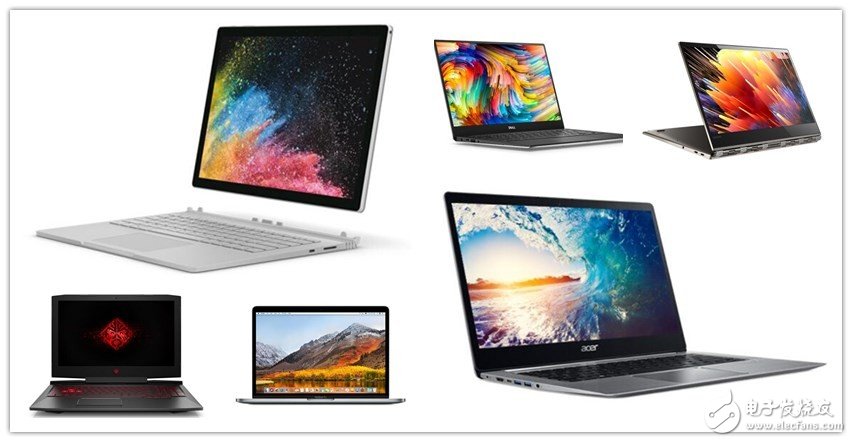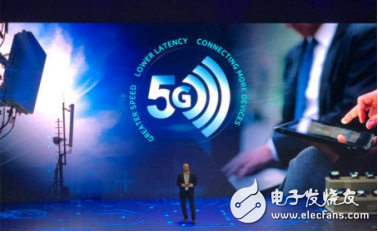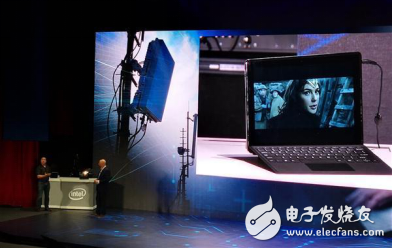Since the birth of the world's first general-purpose computer "ENIAC" in 1946, electronic computers have been developed for more than 70 years. From the initial behemoth, to desktop computers with separate components, to more convenient all-in-one computers and thinner and lighter notebooks, palmtops, and tablet computers, the technological development of electronic computers is remarkable and brilliant, but it is gradually entering a bottleneck period.
The development dilemma of PC is mainly manifested in two aspects. The first is the inherent lack of innovation and selling points. From the perspective of new PC products in the world in 2018, whether it is HP Shadow Elf 4th Generation, Lenovo Yoga 920, Dell XPS 15, Acer Hummingbird Swift 5, Apple MacBook Pro, Microsoft Surface Book 2, or other brands of PC products, none of them have appeared. New forms or concepts are introduced, and their appeal to consumers has declined. To a certain extent, since the first computer was manufactured, the electronic computer has remained unchanged, and the structure has basically not changed in 70 years.

Secondly, from the perspective of market response, with the popularity of smart phones and smart wearables in recent years, most consumers prefer finger-interactive office entertainment, and the PC market share is crazily squeezed by these emerging mobile computing devices.
Data show that since 2012, global PC shipments have declined for the sixth consecutive year. The total global PC shipments in 2017 totaled 262.5 million units, a decline of 2.8% from 270.1 million units in 2016. This is in sharp contrast to the peak data of 352.8 million units in 2011. The five years from 2012 to 2017 are the golden development period for mobile computing devices such as smart phones and smart wearables.
Intel: Close marriage of 5G technology and traditional PCHow to break the "bottleneck curse" of the PC industry? A new path to reshape the value of PC? On June 5, 2018, at the Computex TAIPEI 2018 (Computex TAIPEI 2018), Intel and the US operator Sprint announced in a high profile that they will launch a 5G notebook computer that uses 5G to provide a continuous network in 2019, that is, 5G computers.

As the leader of the CPU, Intel generously acknowledged its ambitions in the 5G field. At the Taipei Computer Show, Intel specially arranged a 5G infrastructure exhibition area, allowing visitors to experience the efficient performance of 5G networking at a close distance.
In the subsequent keynote speech, Intel invited the US operator Sprint to its "station" to bring the 5G R&D process between the two parties, and announced that Sprint is expected to start providing mobile 5G services in the first half of 2019 and will sell them in its global stores. 5G computers based on Intel processors.
Intel also revealed that the first batch of 5G computer equipment will be jointly developed by leading PC manufacturers such as Acer, Asus, Dell, HP, Lenovo and Microsoft, and Intel. The specific models will be 5G laptops and 2-in-1 computers.
Surprisingly, Intel also showed the world's first prototype of a notebook with a 5G communication module in the speech, and used 5G network to stream and play 4K high-definition movies for the notebook, with extremely fast speed and smooth pictures.

5G is a mobile phone network, not a computer network. Why does Intel want to combine the two? Intel explained that 5G technology provides ultra-large bandwidth for mobile communications. Compared with 4G, 5G networks can support more than 100 times the equipment. The transmission speed and capacity are not only faster, larger, and safer. Therefore, Intel hopes that its 5G applications will start from smart phones and then extend to more areas.
In Intel's view, laptops will be one of the hardware that is easier to support 5G communications, because it can provide more space for 5G chips, as well as longer battery life. This is a hardware environment that smart phones cannot give.
Moreover, there are currently more than 20 4G computers on the market. These PC products that can connect to 4G networks can completely solve the pain points of wired networks and the instability of wireless networks, and have been affirmed by the consumer market. In the future, it is believed that with the blessing of 5G communications, 5G computers will reopen the gap in the consumer market and activate the new engine for the development of the PC industry.
A membrane switch (PCBA), just like an electrical switch, turns the circuit on and off. These controls are slightly different from standard mechanical switches; however, the physics is the same.
When the two poles come in contact, the circuit closes, and the current flows. Nevertheless, Membrane Switches are advantageous because they are eco-friendly. Membrane switches are of many different types,
Tactile membrane switch
Non-tactile membrane switches
Mixed panels
Pcba Membrane Switches,Pcba Membrane Switches And Outlets,Pcba Membrane Switches Keypad,Buttons Pcba Membrane Switch
KEDA MEMBRANE TECHNOLOGY CO., LTD , https://www.kedamembrane.com
